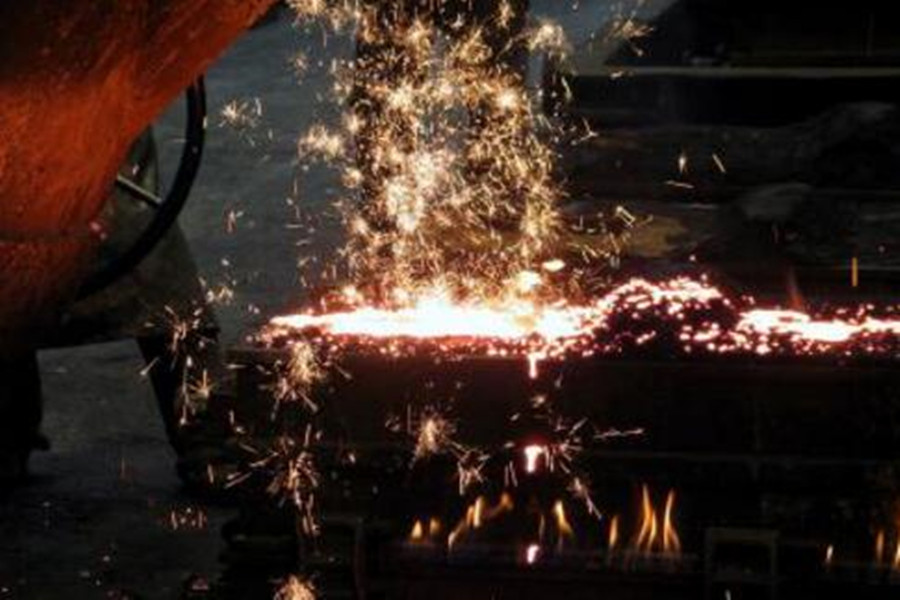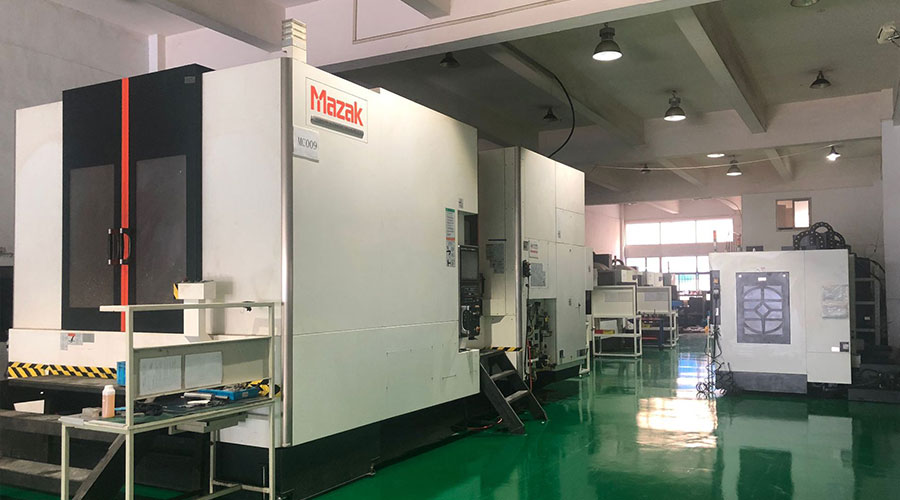The influence of the casting process of the TV University of Science and Technology on the quality of aluminum alloy castings Umbrella Jingchao Gu Yuan, Wang Yanpeng, Shenyang Institute of Foundry, Shenyang Vocational and Technical College of Liaoning Equipment Manufacturing Vocational and Technical College Aluminum alloy castings with high requirements for tightness and roughness should be molded with resin sand, and a double-pack, four-riser gap-type pouring system should be adopted.
Overview of low-pressure casting of aluminum alloy Aluminum is one of the most familiar metals. Among the many lightweight materials, aluminum alloy is one of the most important materials, and it is also the most widely used lightweight material. Because aluminum has a low melting point, good fluidity, and good casting performance, it is easy to manufacture parts with complex shapes. Because of its low density and high specific strength, aluminum alloys have been widely used in the machinery industry, automobile industry, aerospace industry and other fields.
Low-pressure casting is a casting method between gravity casting and pressure casting. It uses gas pressure to hydraulically insert metal into the mold and make the casting crystallize and solidify under a certain pressure. Low-pressure casting has the advantages of high dimensional accuracy of castings, stable filling, and easy access to high-quality castings. It has become an important process for producing automotive aluminum alloy castings.

Determination of the process plan of aluminum alloy casting tank body 2.1 Analysis of aluminum alloy casting tank body The tank body is currently the product with the highest pressure rating and has the world’s advanced level. This product puts forward higher requirements for the quality of aluminum alloy castings. Castings of this kind of products generally have the characteristics of larger external dimensions, higher dimensional accuracy, stricter air tightness and roughness requirements, and batch use. How to meet the ever-increasing quality requirements and batch production tasks under the existing production conditions has become our top priority.
In response to this type of problem, the research team has pooled ideas, combined professional theory and practical experience, comprehensively analyzed the structure and technical requirements of several castings, conducted multiple demonstrations and studies on the production process of this type of casting, and decided to make this type of product casting. It is produced by resin sand molding. The use of resin sand molding production can not only guarantee the surface roughness requirements of castings, but also the production rate and internal quality of castings will reach a new height, creating a precedent for the production of large-size and high-precision castings.
The structural characteristics of aluminum alloy castings can be seen in the rough castings of the tank body. The structure is relatively simple, but the size is larger, the wall thickness is thin, and the flanges on both sides of the tank body have SF6 gas sealing requirements, which is difficult to produce by traditional sand mold technology. After research and demonstration by the research team, it was decided to use the resin sand molding process to produce the parts based on the experience of ABB castings.
The determination of the pouring system adopts the horizontal modeling method for the blank castings of the tank body, and the pouring system adopts the pouring system with double ladle and four riser gaps. The feature of this type of pouring system is that it can make the alloy liquid level of high-volume castings rise uniformly during the pouring process, and the filling is stable, and the metal liquid level will not be large due to the excessive volume of the casting, forming a high-speed splashing liquid rushing type Cavity, secondary slagging produces defects. The flange part of the end face of the piece is thicker, in order to ensure the formation of a dense structure, especially the circumferential cold iron is added here to prevent shrinkage. The design of the runner is borrowed from the production experience of ABB castings, and the upper and lower boxes are modeled separately, and the filter under the runner is used to prevent inclusions from entering the cavity.
At first sight of the solution, the feature of this solution is that it can evenly set the riser on the circumference of the casting, which not only satisfies the feeding function, but also plays the role of uniform stress to prevent deformation. However, there are many external risers, it is difficult to clean and cut and the amount of grinding is large, and the outer surface roughness is difficult to meet the requirements.
See the second plan. The pouring system of this plan is composed of a resin sand core, which ensures the roughness requirements of the outer surface of the casting, while reducing the size of the sand box, thereby saving the amount of resin sand used and improving the process yield. Place cold iron on the circumference of the welding groove to make this part solidify first, and the feed is sufficient to form a dense structure to meet the production needs of the next process.
Process plan one is the process plan we adopted when producing LW56-550 products. The plan has been verified by actual production and is feasible. However, the process yield is low, the grinding workload is large, and the roughness of the shape is not ideal. Process plan two is theoretically feasible, but it has not been verified by actual production. In order to improve the new technology and improve the quality of castings, it was decided to boldly adopt the second production plan.
Conclusion of the second solution of the pouring system The three castings were produced in a trial, and the above casting process was used in the production process, all of which were cast at one time. Information feedback after machining, the dimensional accuracy and internal quality of the casting show that the finish fully meets the machining requirements.
For tanks with simple structure, large size, thin wall thickness and SF6 gas sealing requirements on both sides of the flange, resin sand molding process, horizontal molding method, double bag, and four riser gap pouring system are adopted. , It can cast aluminum alloy castings with the required quality.
Link to this article: The influence of casting process on the quality of aluminum alloy castings
Reprint Statement: If there are no special instructions, all articles on this site are original. Please indicate the source for reprinting:https://www.cncmachiningptj.com/,thanks!
 PTJ® provides a full range of Custom Precision cnc machining china services.ISO 9001:2015 &AS-9100 certified. 3, 4 and 5-axis rapid precision CNC machining services including milling, sheet metal to customer specifications,Capable of metal & plastic machined parts with +/-0.005 mm tolerance.Secondary services include CNC and conventional grinding, laser cutting,drilling,die casting,sheet metal and stamping.Providing prototypes, full production runs, technical support and full inspection.Serves the automotive, aerospace, mold&fixture,led lighting,medical,bicycle, and consumer electronics industries. On-time delivery.Tell us a little about your project’s budget and expected delivery time. We will strategize with you to provide the most cost-effective services to help you reach your target,Welcome to Contact us ( [email protected] ) directly for your new project.
PTJ® provides a full range of Custom Precision cnc machining china services.ISO 9001:2015 &AS-9100 certified. 3, 4 and 5-axis rapid precision CNC machining services including milling, sheet metal to customer specifications,Capable of metal & plastic machined parts with +/-0.005 mm tolerance.Secondary services include CNC and conventional grinding, laser cutting,drilling,die casting,sheet metal and stamping.Providing prototypes, full production runs, technical support and full inspection.Serves the automotive, aerospace, mold&fixture,led lighting,medical,bicycle, and consumer electronics industries. On-time delivery.Tell us a little about your project’s budget and expected delivery time. We will strategize with you to provide the most cost-effective services to help you reach your target,Welcome to Contact us ( [email protected] ) directly for your new project.
Link to this article:The influence of casting process on the quality of aluminum alloy castings
Reprint Statement: If there are no special instructions, all articles on this site are original. Please indicate the source for reprinting.:Cut Wiki,Thanks!^^
